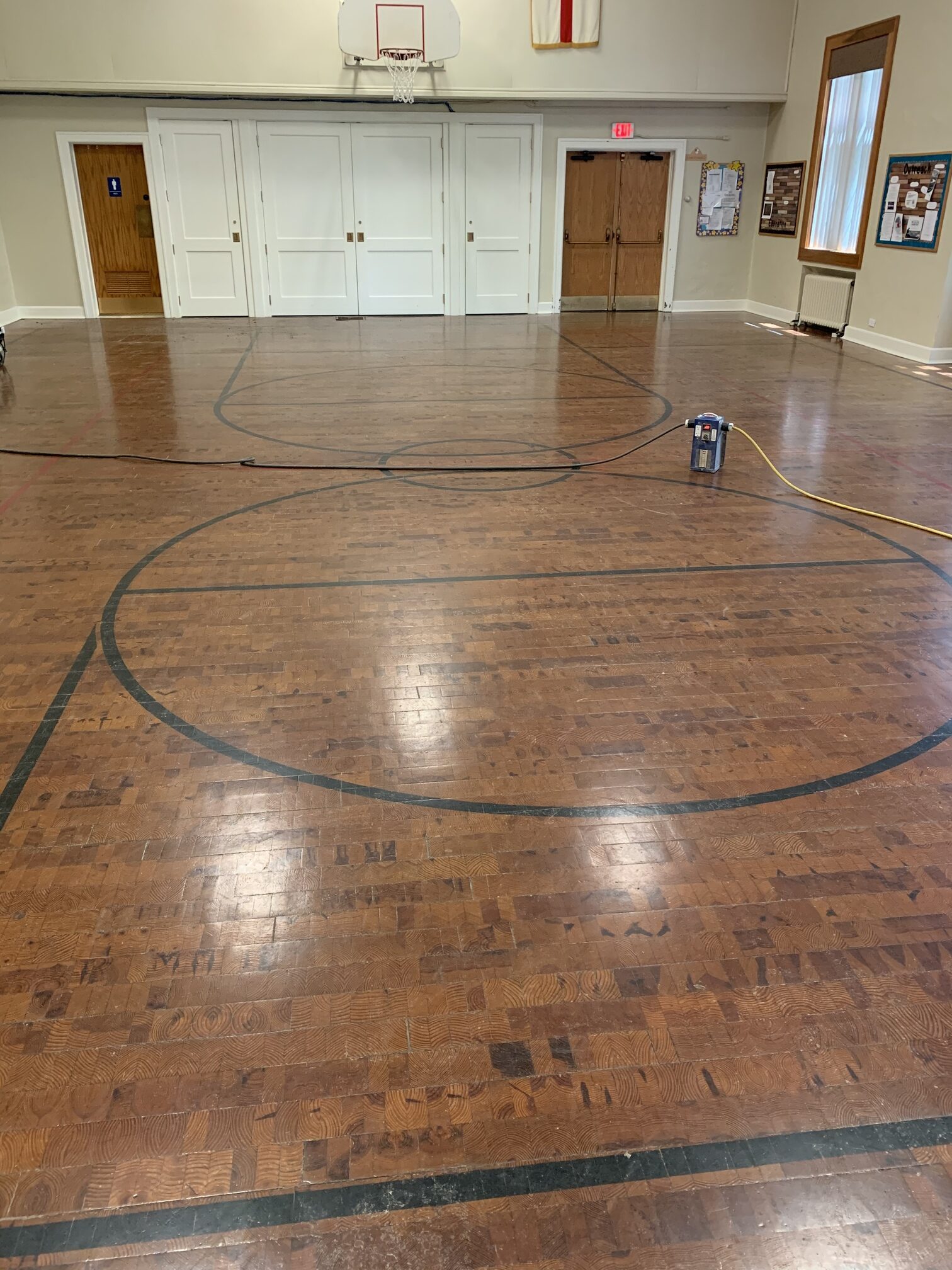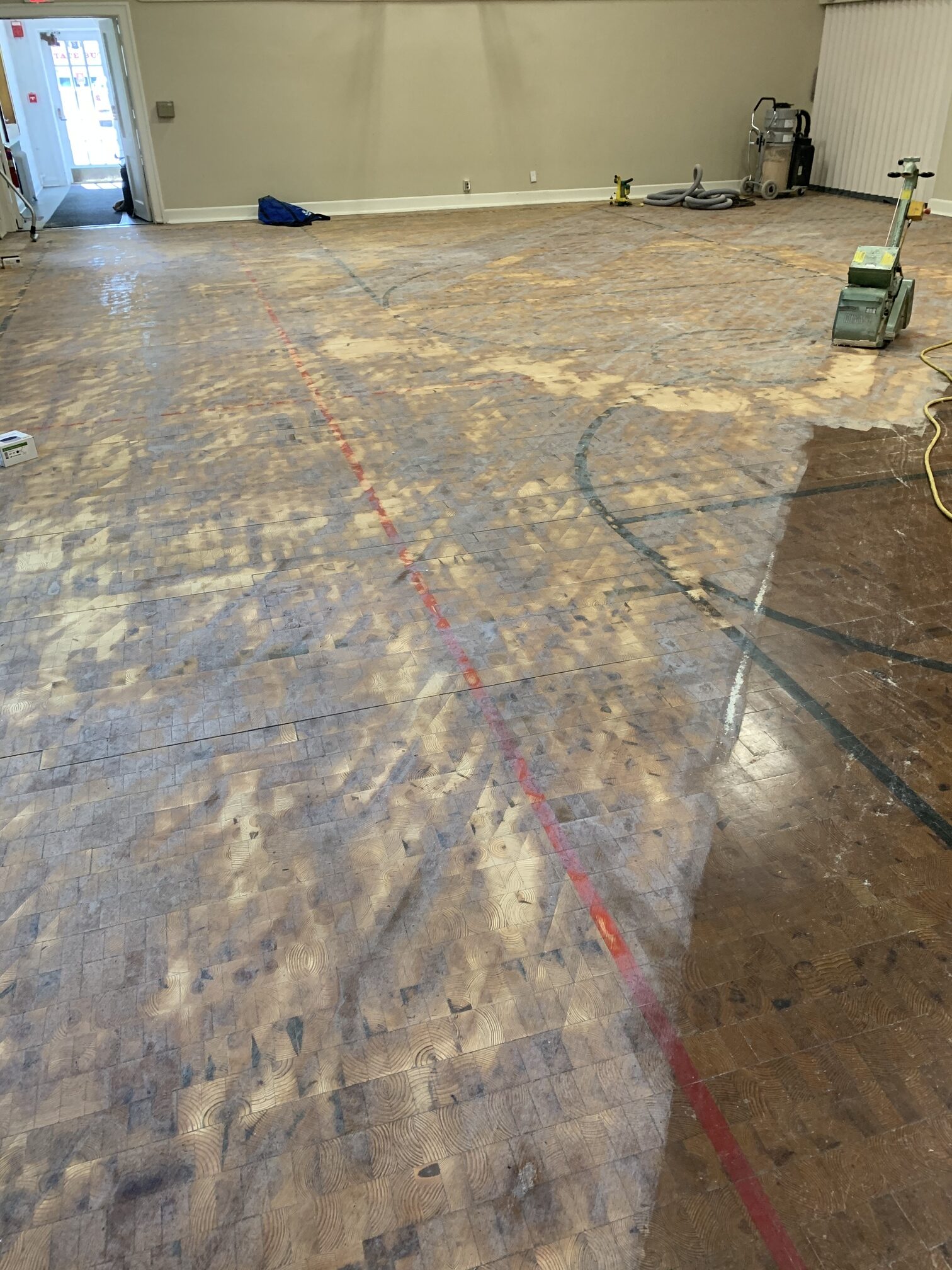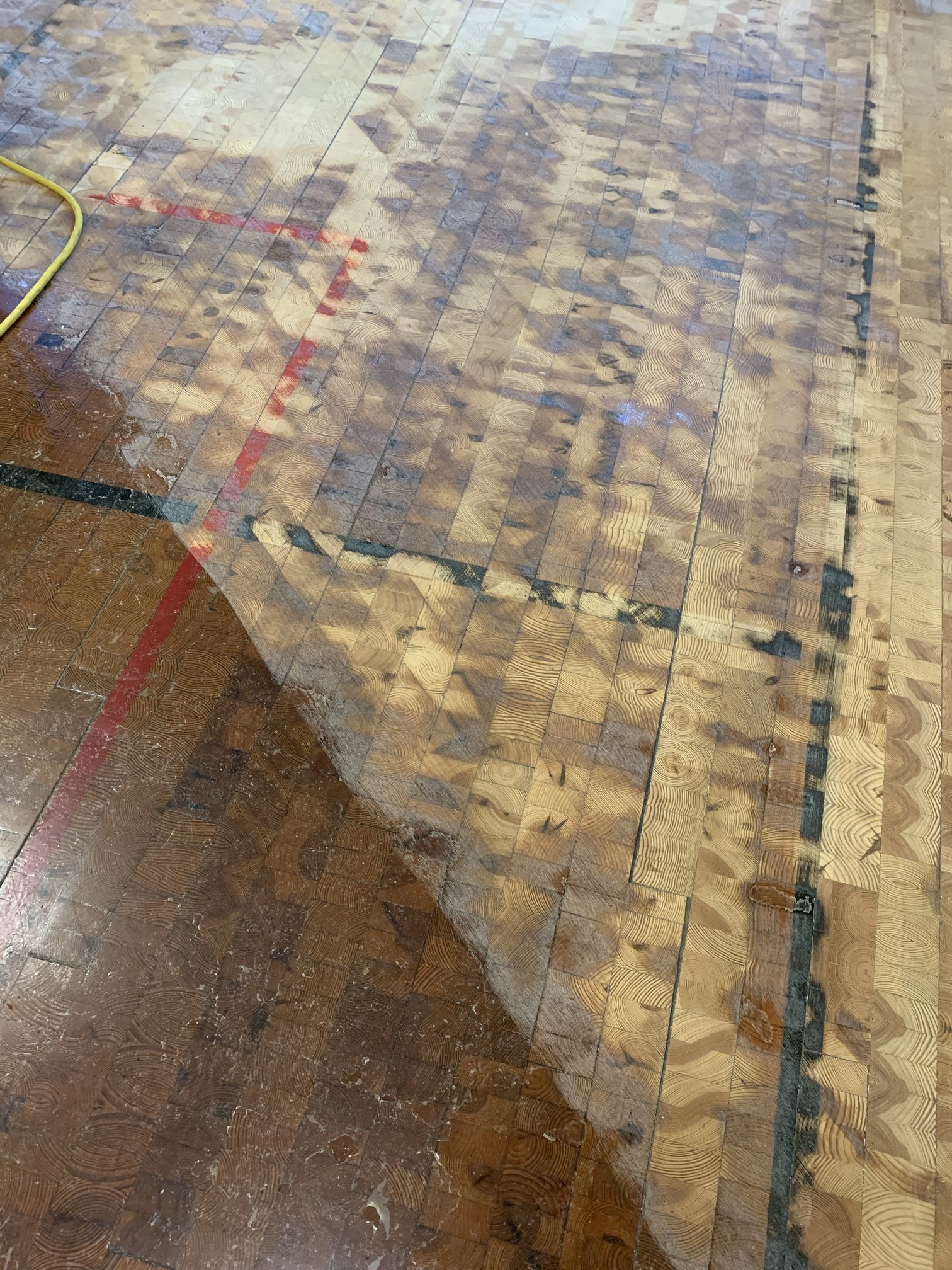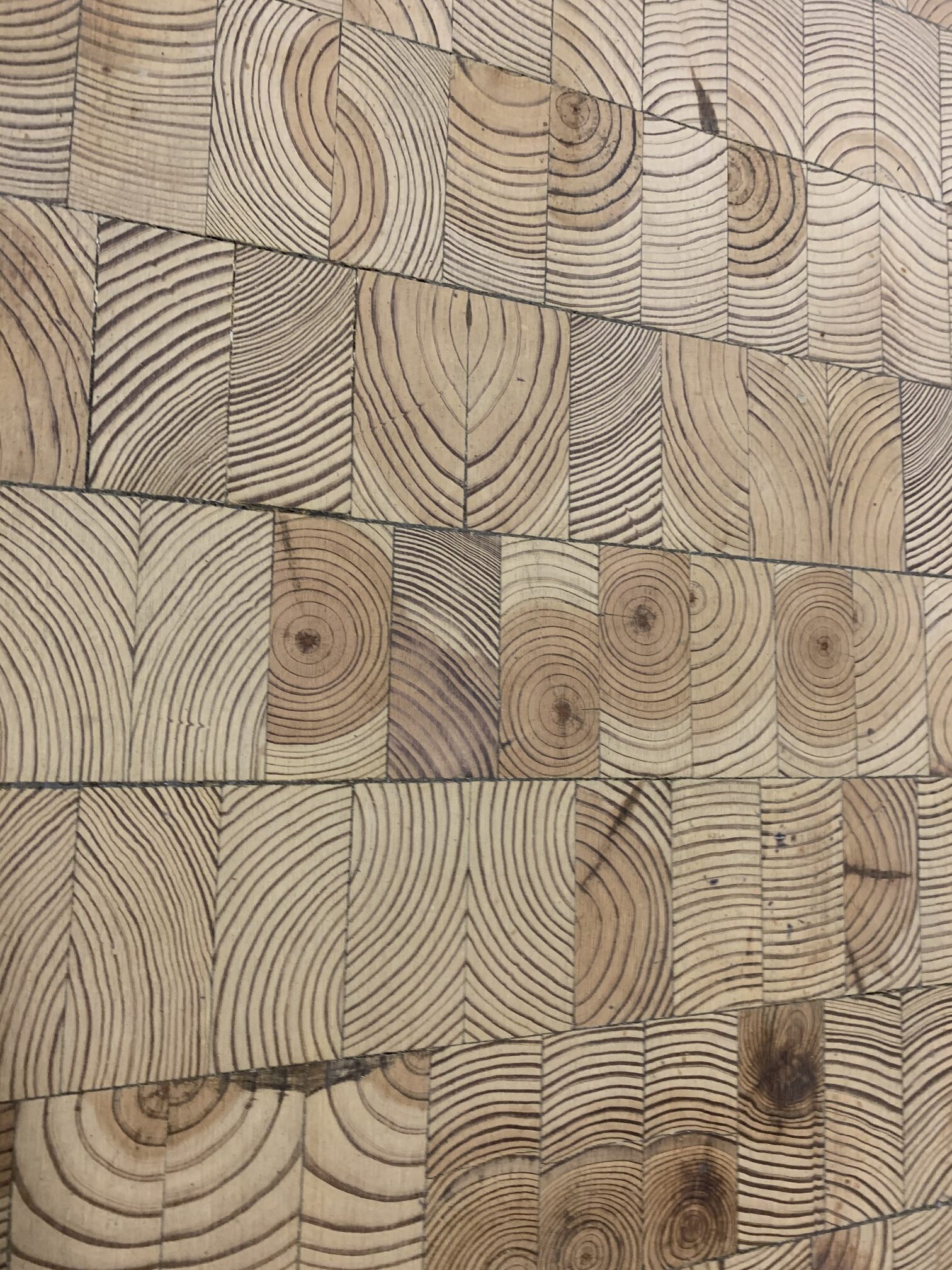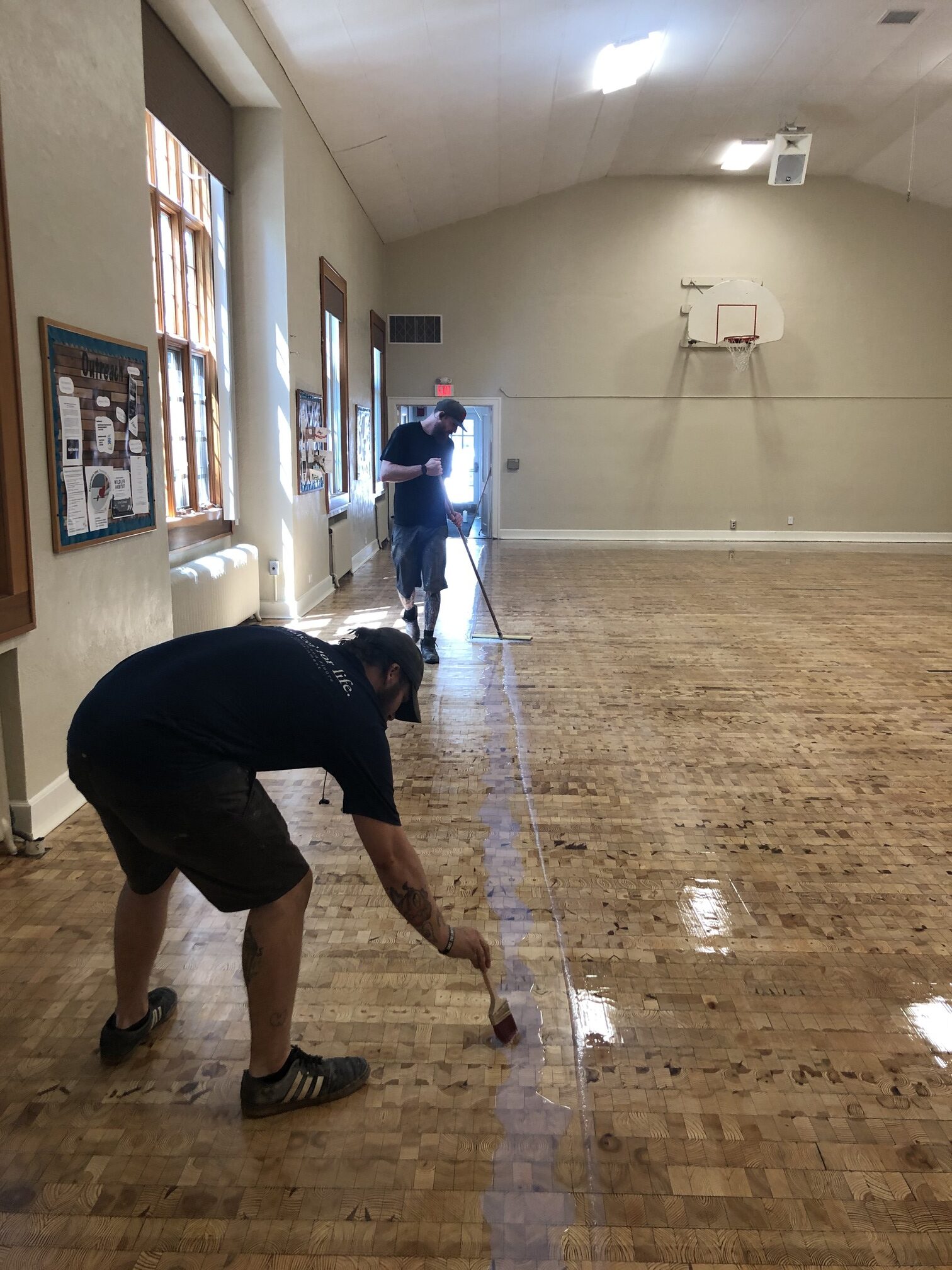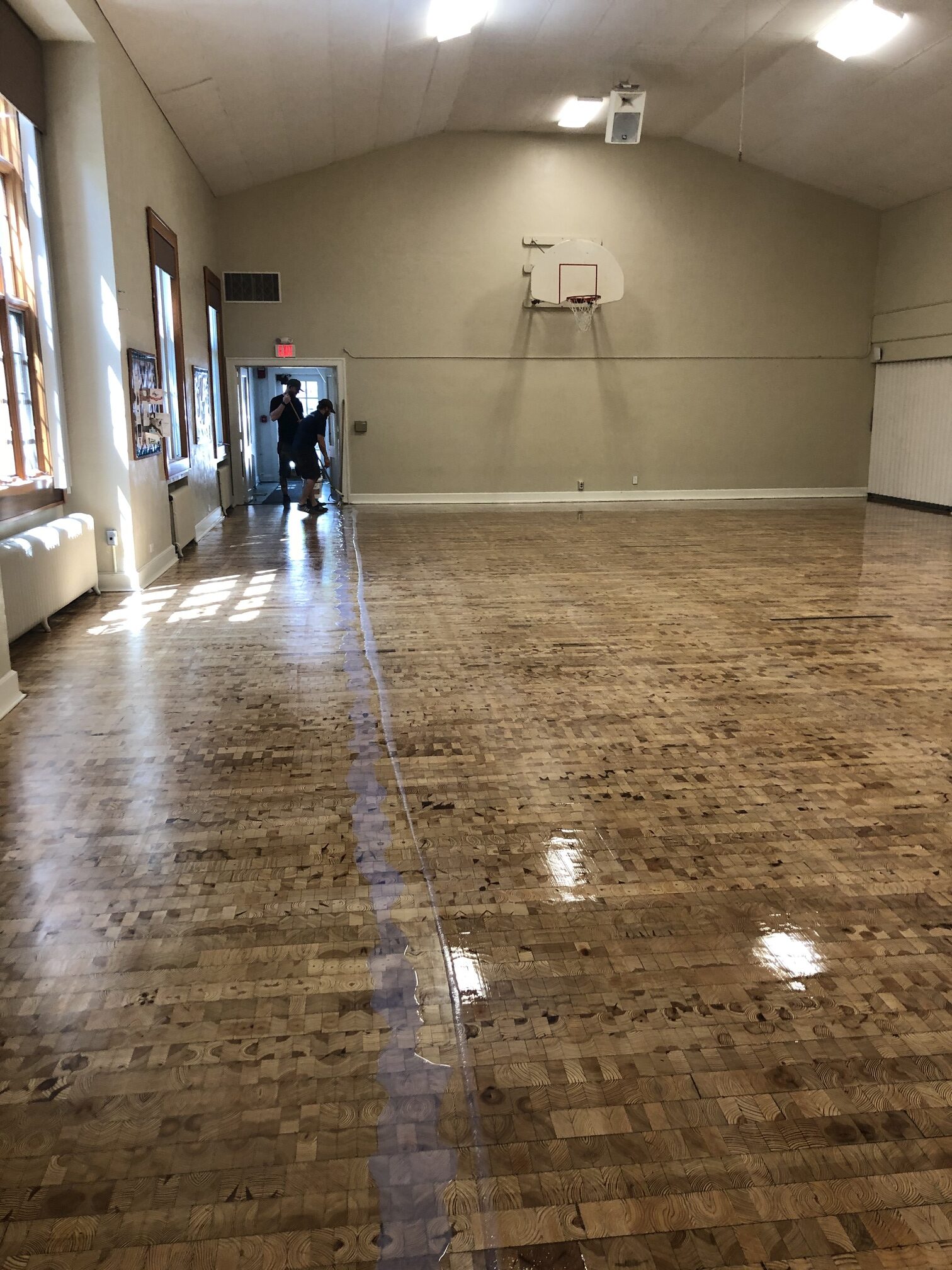The closing of the church has been difficult, but it has presented an opportunity to do some restoration work. I cannot think of another time when the parish hall would have nothing scheduled for this duration of time. Therefore, Vestry and the Building and Grounds committee jumped on the opportunity to refurbish the gym floors. The Preservation Endowment advisors agreed with the need and its timeliness, so this will have no impact on the 2020 budget.
Our beautiful end grain parish hall floor is priceless. In today’s market a similar end grain floor would not be feasible, which is even more of a reason to take care of ours. The floor needed a tune up – the polyurethane has been flaking off and, to my knowledge, it’s been generations since it was sanded down to the bare wood. As a result of the years of sun exposure, dirt, and layer upon layer of polyurethane applied to it, the wood had taken on a dark color. Once those old layers are taken off it reveals the wood’s original luster, a blonder color and the unique grain pattern that makes the floor so outstanding. Since Vestry voted to apply a water-based polyurethane, which is a more environmental and durable finish, the color will remain lighter. Once we saw the floor sanded, and because it is not a regulation-size court, we also decided to only apply a small foul line instead of repainting all the lines. One unintended benefit of the way the paint had been applied 80-odd years ago is that the lines are still faintly visible, allowing the courts to still be utilized on the occasions that the youth want to play basketball. This is a compromise that will allow those who don’t like the basketball lines to have something less visible, while still maintaining the functionality of the basketball courts. This is another way in which the building shows its history.
Todd Deye, Buildings and Grounds, Chair
